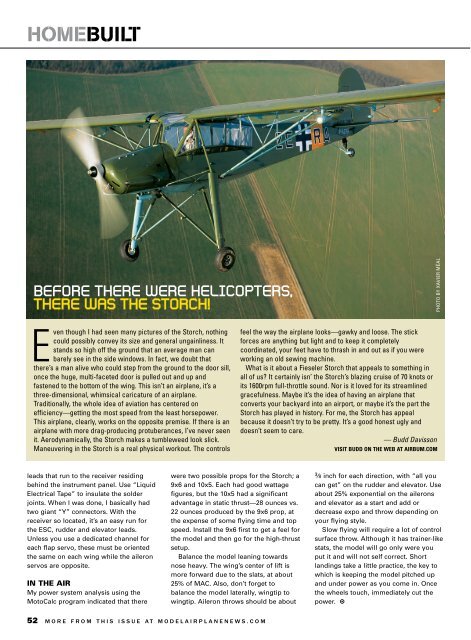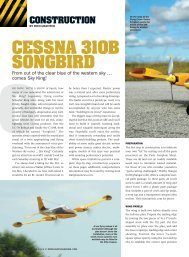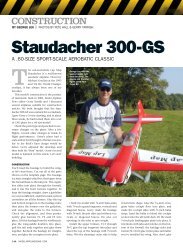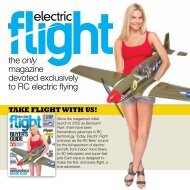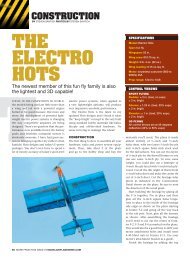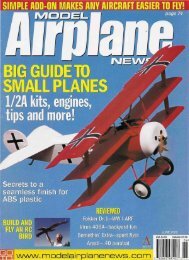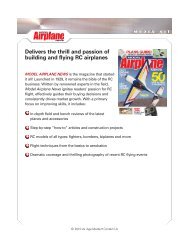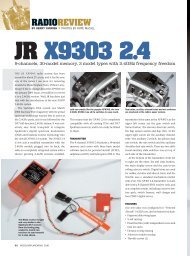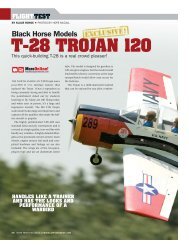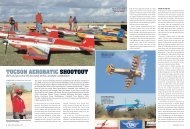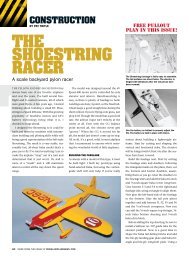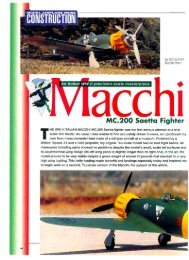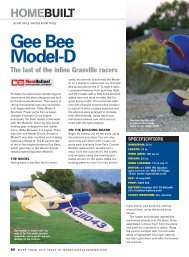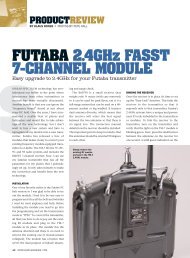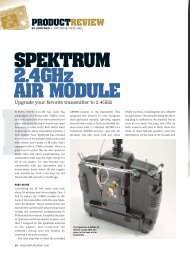You also want an ePaper? Increase the reach of your titles
YUMPU automatically turns print PDFs into web optimized ePapers that Google loves.
HOMEBUILT<br />
MÉAL<br />
XAVIER<br />
BEFORE THERE WERE HELICOPTERS,<br />
BY<br />
THERE WAS THE STORCH! PHOTO<br />
Even though I had seen many pictures of the <strong>Storch</strong>, nothing<br />
could possibly convey its size and general ungainliness. It<br />
stands so high off the ground that an average man can<br />
barely see in the side windows. In fact, we doubt that<br />
there’s a man alive who could step from the ground to the door sill,<br />
once the huge, multi-faceted door is pulled out and up and<br />
fastened to the bottom of the wing. This isn’t an airplane, it’s a<br />
three-dimensional, whimsical caricature of an airplane.<br />
Traditionally, the whole idea of aviation has centered on<br />
efficiency—getting the most speed from the least horsepower.<br />
This airplane, clearly, works on the opposite premise. If there is an<br />
airplane with more drag-producing protuberances, I’ve never seen<br />
it. Aerodynamically, the <strong>Storch</strong> makes a tumbleweed look slick.<br />
Maneuvering in the <strong>Storch</strong> is a real physical workout. <strong>The</strong> controls<br />
leads that run to the receiver residing<br />
behind the instrument panel. Use “Liquid<br />
Electrical Tape” to insulate the solder<br />
joints. When I was done, I basically had<br />
two giant “Y” connectors. With the<br />
receiver so located, it’s an easy run for<br />
the ESC, rudder and elevator leads.<br />
Unless you use a dedicated channel for<br />
each flap servo, these must be oriented<br />
the same on each wing while the aileron<br />
servos are opposite.<br />
IN THE AIR<br />
My power system analysis using the<br />
MotoCalc program indicated that there<br />
were two possible props for the <strong>Storch</strong>; a<br />
9x6 and 10x5. Each had good wattage<br />
figures, but the 10x5 had a significant<br />
advantage in static thrust—28 ounces vs.<br />
22 ounces produced by the 9x6 prop, at<br />
the expense of some flying time and top<br />
speed. Install the 9x6 first to get a feel for<br />
the model and then go for the high-thrust<br />
setup.<br />
Balance the model leaning towards<br />
nose heavy. <strong>The</strong> wing’s center of lift is<br />
more forward due to the slats, at about<br />
25% of MAC. Also, don’t forget to<br />
balance the model laterally, wingtip to<br />
wingtip. Aileron throws should be about<br />
52 MORE FROM THIS ISSUE AT MODELAIRPLANENEWS.COM<br />
feel the way the airplane looks—gawky and loose. <strong>The</strong> stick<br />
forces are anything but light and to keep it completely<br />
coordinated, your feet have to thrash in and out as if you were<br />
working an old sewing machine.<br />
What is it about a <strong>Fieseler</strong> <strong>Storch</strong> that appeals to something in<br />
all of us? It certainly isn’ the <strong>Storch</strong>’s blazing cruise of 70 knots or<br />
its 1600rpm full-throttle sound. Nor is it loved for its streamlined<br />
gracefulness. Maybe it’s the idea of having an airplane that<br />
converts your backyard into an airport, or maybe it’s the part the<br />
<strong>Storch</strong> has played in history. For me, the <strong>Storch</strong> has appeal<br />
because it doesn’t try to be pretty. It’s a good honest ugly and<br />
doesn’t seem to care.<br />
— Budd Davisson<br />
VISIT BUDD ON THE WEB AT AIRBUM.COM<br />
3 ⁄8 inch for each direction, with “all you<br />
can get” on the rudder and elevator. Use<br />
about 25% exponential on the ailerons<br />
and elevator as a start and add or<br />
decrease expo and throw depending on<br />
your flying style.<br />
Slow flying will require a lot of control<br />
surface throw. Although it has trainer-like<br />
stats, the model will go only were you<br />
put it and will not self correct. Short<br />
landings take a little practice, the key to<br />
which is keeping the model pitched up<br />
and under power as you come in. Once<br />
the wheels touch, immediately cut the<br />
power. A


